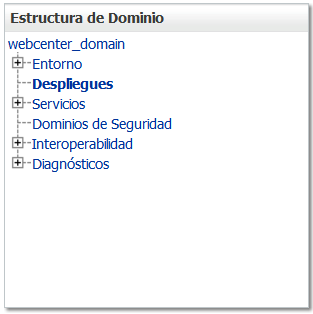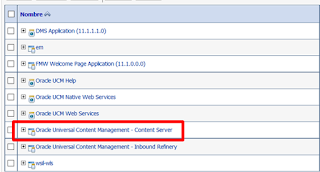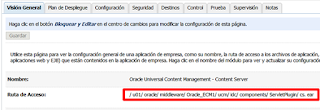Finally after a few hours of test I found the good XPath syntax.
This is de plan.xml file
<?xml version='1.0' encoding='UTF-8'?>
<deployment-plan xmlns="http://xmlns.oracle.com/weblogic/deployment-plan" xmlns:xsi="http://www.w3.org/2001/XMLSchema-instance" xsi:schemaLocation="http://xmlns.oracle.com/weblogic/deployment-plan http://xmlns.oracle.com/weblogic/deployment-plan/1.0/deployment-plan.xsd" global-variables="false">
<application-name>cs.ear</application-name>
<variable-definition>
<variable>
<name>ucmParamValue</name>
<value>UCMJSESSIONID</value>
</variable>
<variable>
<name>ucmParamName</name>
<value>IdcSessionKey</value>
</variable>
</variable-definition>
<module-override>
<module-name>cs.ear</module-name>
<module-type>ear</module-type>
<module-descriptor external="false">
<root-element>weblogic-application</root-element>
<uri>META-INF/weblogic-application.xml</uri>
</module-descriptor>
<module-descriptor external="false">
<root-element>application</root-element>
<uri>META-INF/application.xml</uri>
</module-descriptor>
<module-descriptor external="true">
<root-element>wldf-resource</root-element>
<uri>META-INF/weblogic-diagnostics.xml</uri>
</module-descriptor>
</module-override>
<module-override>
<module-name>cs.war</module-name>
<module-type>war</module-type>
<module-descriptor external="false">
<root-element>weblogic-web-app</root-element>
<uri>WEB-INF/weblogic.xml</uri>
<variable-assignment>
<name>ucmParamValue</name>
<xpath>/weblogic-web-app/session-descriptor/cookie-name</xpath>
<operation>add</operation>
</variable-assignment>
</module-descriptor>
<module-descriptor external="false">
<root-element>web-app</root-element>
<uri>WEB-INF/web.xml</uri>
<variable-assignment>
<name>ucmParamName</name>
<xpath>/web-app/filter/[filter-name="JpsFilter"]/init-param/param-name</xpath>
<operation>add</operation>
</variable-assignment>
<variable-assignment>
<name>ucmParamValue</name>
<xpath>/web-app/filter/[filter-name="JpsFilter"]/init-param/[param-name="IdcSessionKey"]/param-value</xpath>
<operation>add</operation>
</variable-assignment>
<variable-assignment>
<name>ucmParamName</name>
<xpath>/web-app/filter/[filter-name="IdcFilter"]/init-param/param-name</xpath>
<operation>add</operation>
</variable-assignment>
<variable-assignment>
<name>ucmParamValue</name>
<xpath>/web-app/filter/[filter-name="IdcFilter"]/init-param/[param-name="IdcSessionKey"]/param-value</xpath>
<operation>add</operation>
</variable-assignment>
<variable-assignment>
<name>ucmParamName</name>
<xpath>/web-app/servlet/[servlet-name="adfAuthentication"]/init-param/param-name</xpath>
<operation>add</operation>
</variable-assignment>
<variable-assignment>
<name>ucmParamValue</name>
<xpath>/web-app/servlet/[servlet-name="adfAuthentication"]/init-param/[param-name="IdcSessionKey"]/param-value</xpath>
<operation>add</operation>
</variable-assignment>
</module-descriptor>
</module-override>
<module-override>
<module-name>dav.war</module-name>
<module-type>war</module-type>
<module-descriptor external="false">
<root-element>weblogic-web-app</root-element>
<uri>WEB-INF/weblogic.xml</uri>
</module-descriptor>
<module-descriptor external="false">
<root-element>web-app</root-element>
<uri>WEB-INF/web.xml</uri>
</module-descriptor>
</module-override>
<config-root>/home/oracle/</config-root>
</deployment-plan>
















